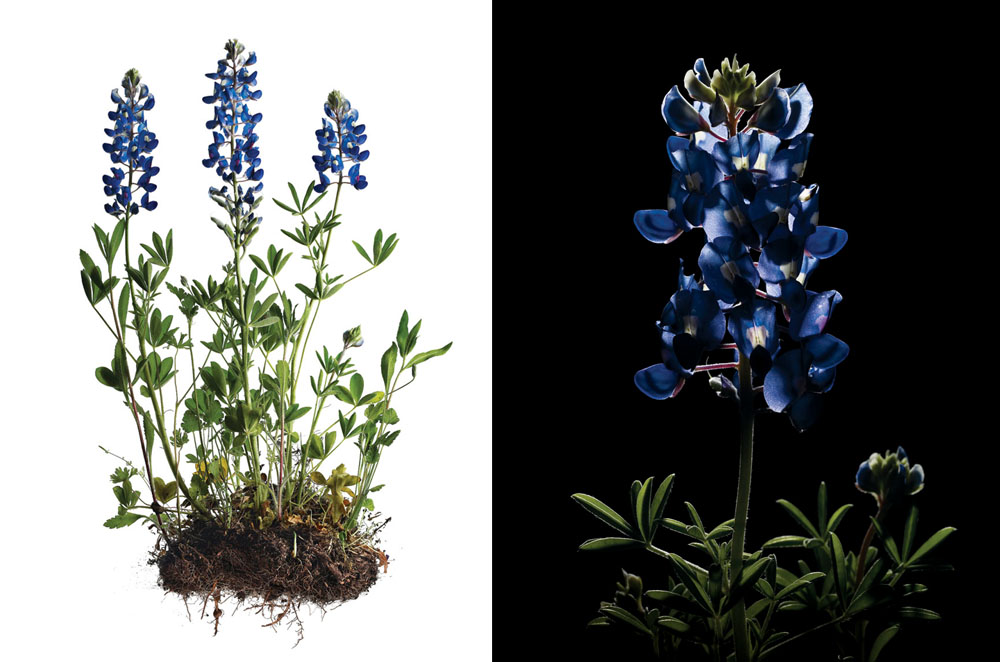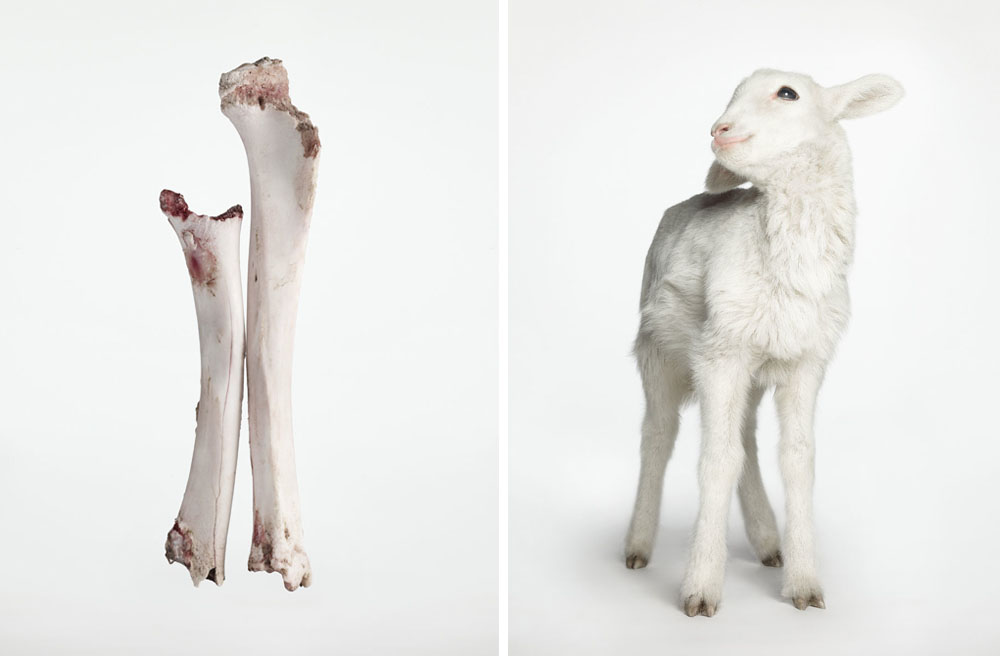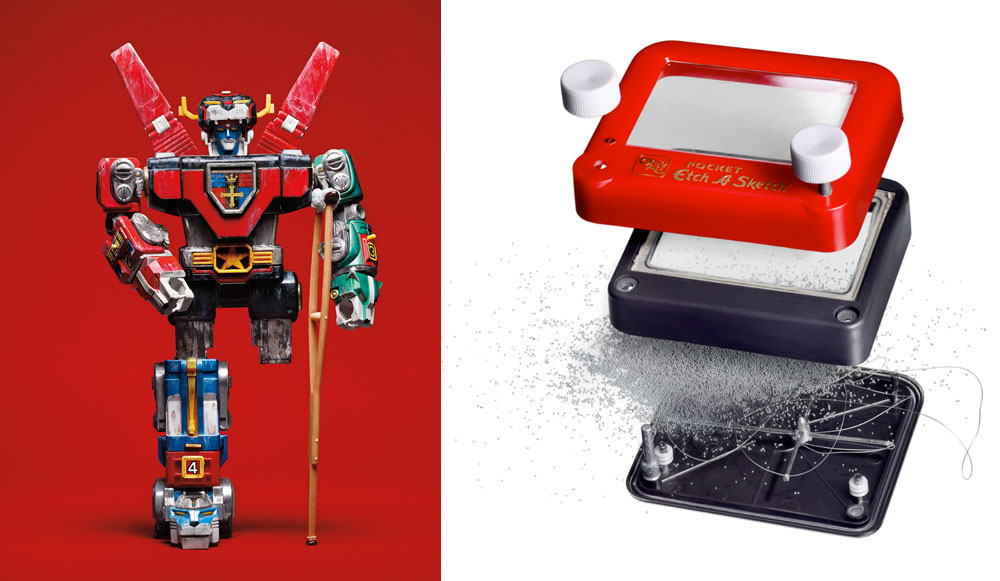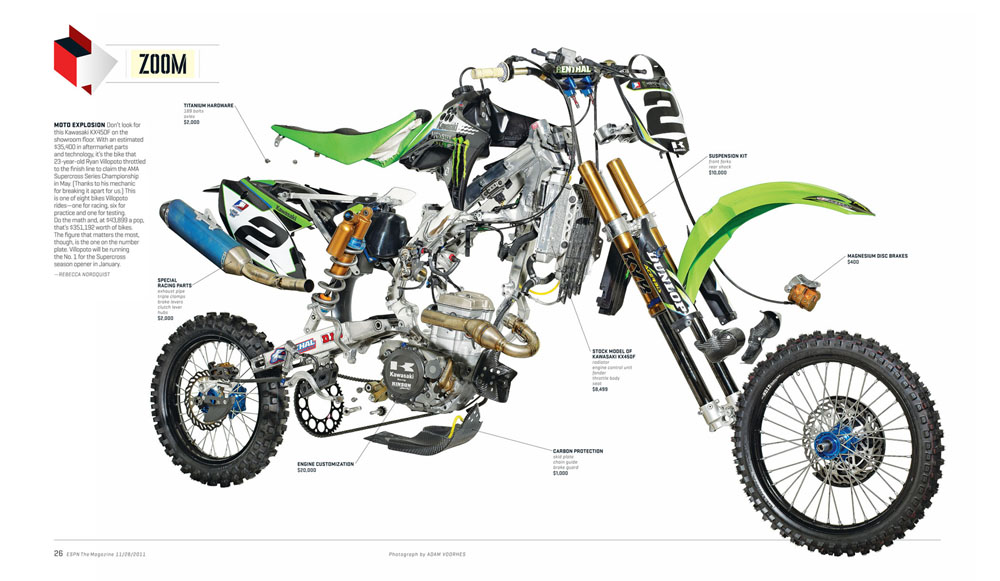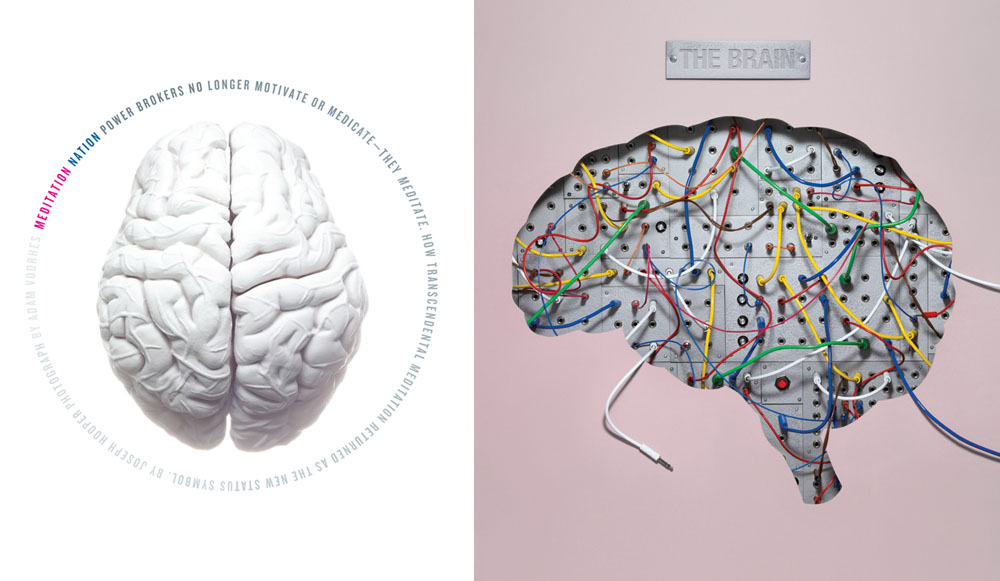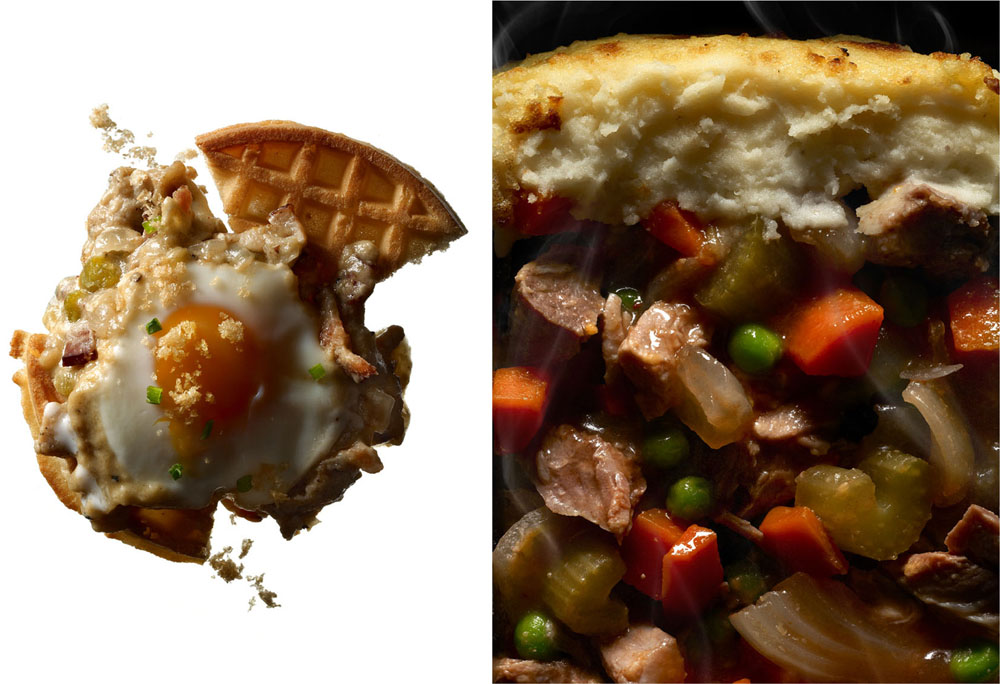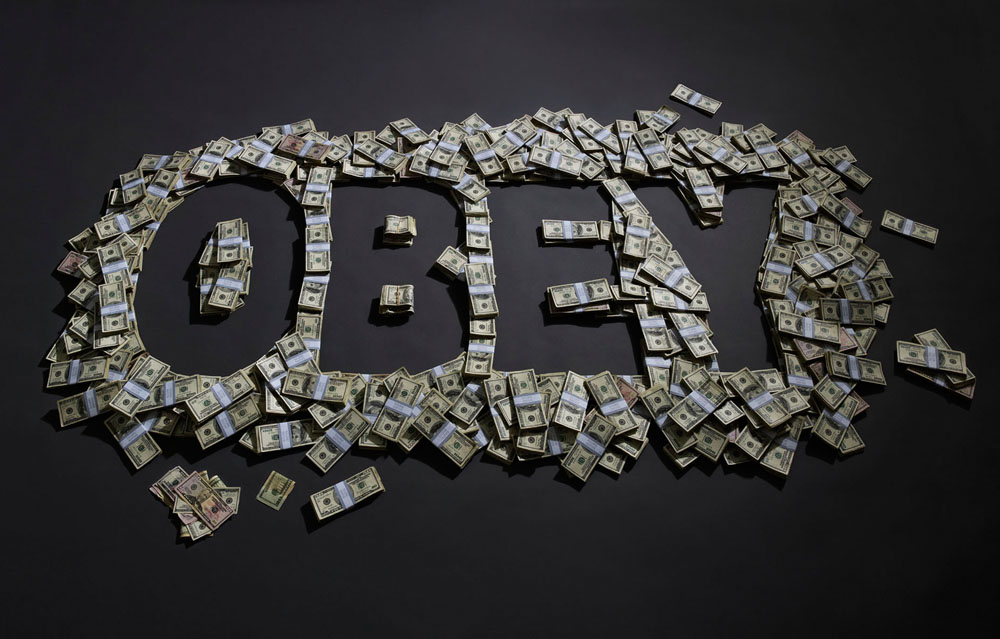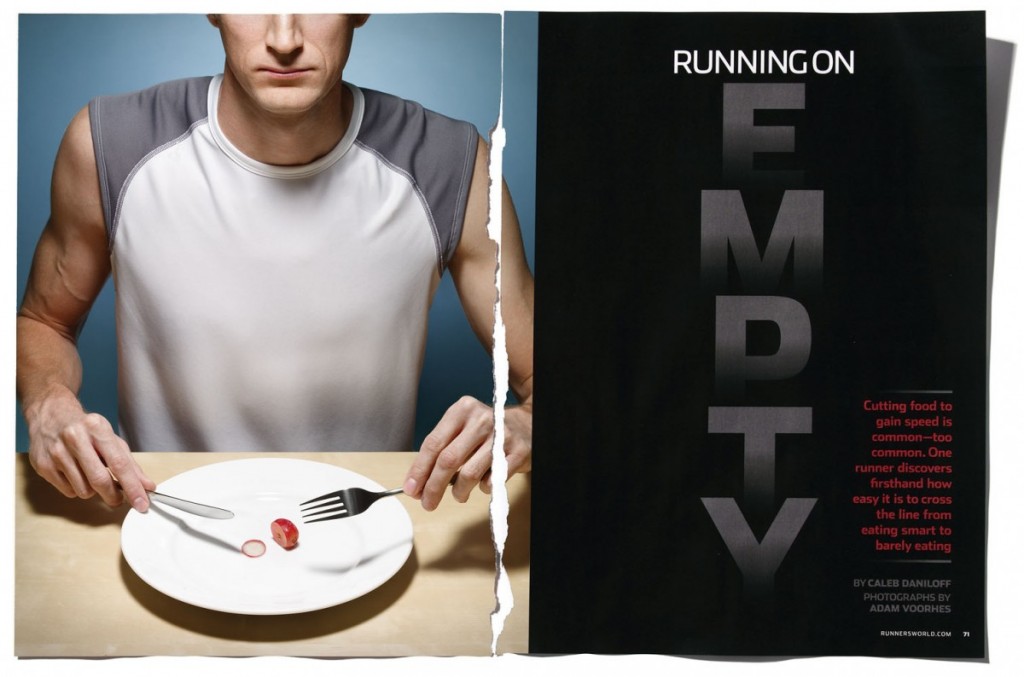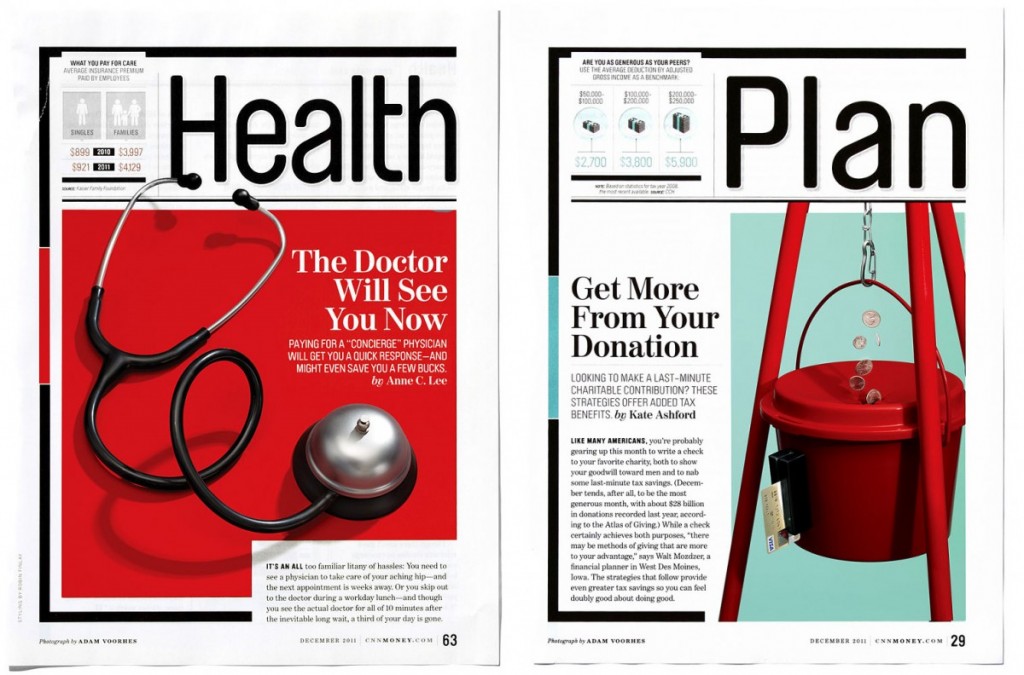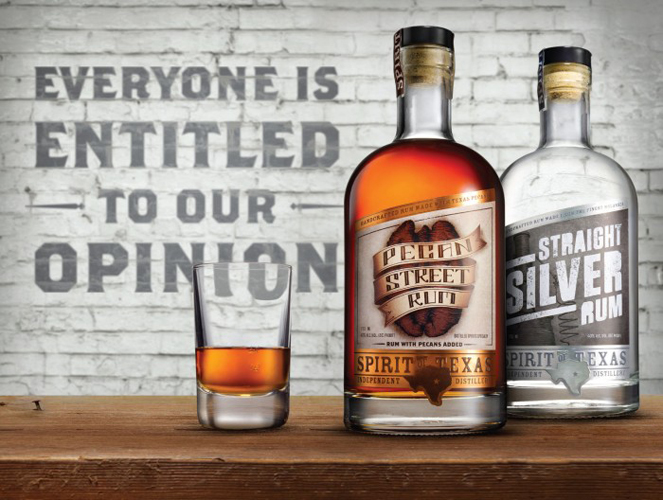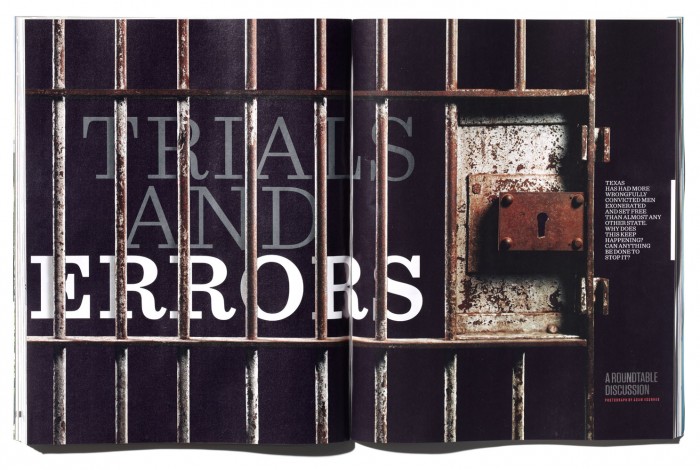Adam Voorhes is a commercial and editorial photographer based in Austin. A few of his many clients include Texas Monthly, ESPN, and Esquire.
As the owner of four dogs, I love your animal portraits. Do people ever hire you to take pictures of their pets?
Although 99% of the photos I take with my phone are of my bulldogs… No. Never.
I did photograph an art director’s Weimaraners in Christmas outfits once. I made him swear to never tell anyone that I took the photos.
I will say, my little buddy bulldog, Catfish, has been in more magazines than most models could ever hope to be in. He’s one handsome little dude.
Were you always interested in photography?
I was interested in illustration until I was about 15 (I still love to draw). A highschool photo class changed everything. The romance of the darkroom, the science meeting art, the small group of historical figures to look up to–it was just too easy to identify with. As soon as I saw an image I’d captured appear under that red light, I was hooked.
As soon as I saw an image I’d captured appear under that red light, I was hooked
How did you get started?
Student loans and worked my ass off. Same as most people I’d guess?
What made you decide to go to Brooks to study photography?
I was going to college studying computer science and history. Although that was supposed to be my focus, I managed to take every photo class the school offered in 18 months. I never really understood that I could make a career of this. It was like not knowing the moon exists. I’d never noticed it and no one ever pointed out the blatantly obvious.
One day I went with some fellow photo nerds to Carmel. Carmel is a coastal California village that Clint Eastwood was mayor for some time with phenomenal art galleries. We went to all of the galleries. All of the famous f64 stuff was showing (like Weston, Adams, Bernhard, Sexton, and so on) and the new ones like Michael Kenna. At the show there was a ‘landscape’ of parking meters in fog that struck me because it was a landscape approached like a still life. The composition of the piece was so intentional. At that time I still didn’t know that I was inherently a still life photographer. I asked the gallery curator about the work. She knew I was just some kid and couldn’t buy anything, but she took print after print out of the files, took them out of their sleeves, and let me handle them, ogling over their craftsmanship.
The photographer was Rolfe Horn. He’d gone to Brooks. That day I decided I would too. Lots of student loan forms later I was there. And in my third year I met Rolfe. He was guest lecturing my class, and that night I found myself on a beach with him drinking Pabst Blue Ribbon, smoking backwoods cigars and taking 45 minute exposures with my 4×5.
A few weeks later there was a raffle in my class for a print Rolf had made from that night. I remember the look on my instructor’s face when he pulled my name. He swore to me that he did pull my name and showed me the scrap of paper. It was fate.
Hell, I don’t even believe in fate, but how can you deny that?
I love that photo.
Do you think photo school is a necessary foundation for photographers?
No. But things are a lot different now. Things are different every year. What does seem to be constant is that photography is an entrepreneurial venture. And if you can be prepared for that, you will be better off.
What are your go-to cameras or your favorite cameras you have experimented with in the past?
A view camera is my most comfortable and truest tool (currently using an Arca Swiss 6x9cm with a Phase One P65+). Although it is very time consuming, so I also use a Hasselblad V system when I need to work faster. It is still all manual, but much quicker than a view camera.
I guess I like the old school stuff.
Do you have a mentor in the field?
No. Not like that. I have my wife. She is my collaborator, my inspiration, my director, and in a lot of ways she is pretty much my handler. I would flounder a lot more without her to point me in the right direction.
What has been your best career decision?
When I was starting I built the basic still life portfolio similar to what most of my competition has. Cosmetics, a shiny phone, a few gadgets and fashion accessories. Everyone has a similar portfolio and it gets old pretty quick. After a while I got bored with the assignments I was getting. People hired me to do the dry stuff that was in my portfolio. I started thinking about my work in a new way. I wanted to inspire ideas in art directors and designers. I wanted to make still life that told stories and conveyed concepts. That is now the ultimate goal with my personal work. I’m trying very hard to develop a strong portfolio that shows still life in an atypical way, while staying true to tradition. Since changing my perspective about my work and portfolio, my assignments have gotten much more interesting.
I wanted to make still life that told stories and conveyed concepts
What is your favorite thing about photographing in Texas?
Living in Austin. I have a remarkable quality of life here. When I was living and working in New York I missed things like trees and smiles on people’s faces. The trade off is that very little of my work comes from Texas, so I have to work that much harder to bring work to Austin from cities like New York.
Why would a magazine hire me a thousand miles away where there is someone just as good (or much better) down the street? I have no idea! I’ve managed to trick a few of them into thinking I’m not too bad. I hope I can keep it up because I like it here.
Do you think that living in New York was important to your success and making initial connections?
I learned a lot in New York and gained insight into the industry. Most of my clients are in New York, so having lived there is handy. I would recommend living in New York to anyone. But did I make contacts while living there? No. I had to become known before anyone would want to be my contact. It’s a bit of a puzzle really.
Do you have a dream assignment?
No. I just want to do good work with fun people.
How do you stay motivated?
Staying motivated isn’t an issue. I have a long list of ideas that I’d like to bring to fruition. The hard part is making time. My clients always come first, and my personal work is an after thought.
I have a long list of ideas that I’d like to bring to fruition
What was your first big break?
I had some editorial projects with Shape & a few other magazines right out of school. I also landed Stephen Dweck as a jewelry client after I moved to Brooklyn. However, the one job that really stands out to me is the first GSD&M ad I shot for BMW when I was struggling to get going here in Austin. I’d really been making my living as a camera assistant before moving here, so I was starting at square one. I was struggling to get by, selling old camera gear to pay rent.
I didn’t have strobes, so I used clip lights from the hardware store and foam core to build my light setup. But light is light, as long as you point it in the right direction you can make one hell of an image. And my little career started to grow after completing that job.
How did you establish your personal vision? Was there one project that gave you that “ah ha” moment, where you knew this is where you wanted to take your work?
I don’t think it works like that. You can have an ‘ah ha’ moment where you discover something you want to rip off / emulate, but I think you are who you are. You can express unique ideas from your own perspective, or you copy others.
Do you have any favorite photo books?
Oh yeah. Venenum, Guido Mocafico is the pride of my bookshelf. Gift of the Common Place, Ruth Bernhard was one of my earliest inspirations. Still Life, Irving Penn. A Notebook at Random, Irving Penn. Pretty much any Irving Penn book really. I’m also pretty fond of Blunt, Nigel Parry. And any Yousuf Karsh. I’m very inspired by classic portraiture. And if I can stray from pure photography, I find a lot of joy in the works of Dave Mckean & Mark Ryden.
What was the most helpful part of your ‘education’ that wasn’t photo related?
Marketing. Photography – Marketing = Fail.
Who are you inspired by?
My wife. But if you mean old or dead people? Irving Penn represents everything I aspire to achieve and never will.
How do you define ‘success’ in your own career?
It is complicated. Each achievement is a stepping stone to the next level of possibilities. There isn’t really a final goal to reach. So true success is never reached. We just keep working.
What’s next? Any exciting projects coming up in 2012?
Ha, you’ll have to wait and see.
—
Favorite bbq?
Franklin’s, isn’t that everyone’s?
Favorite breakfast taco?
Mine. I make them at home with eggs from my backyard chickens.
Favorite libation?
Mine I make at home! I’m a hobby mixologist. I’ll say my favorite starts are gin or bourbon.
Do you collect anything?
I don’t like ‘stuff.’ So my go to answer is no. But I do have a small box filled with vintage Polaroids & one off prints I’ve been collecting for a few years. I like images that tell intimate stories about people’s lives. They document history in a very personal way. It is true Americana at its brightest and darkest.
Any hobbies outside of photography?
I’m a serious gardener. It’s something that requires a level of dedication and can take my mind off of work for a while.

